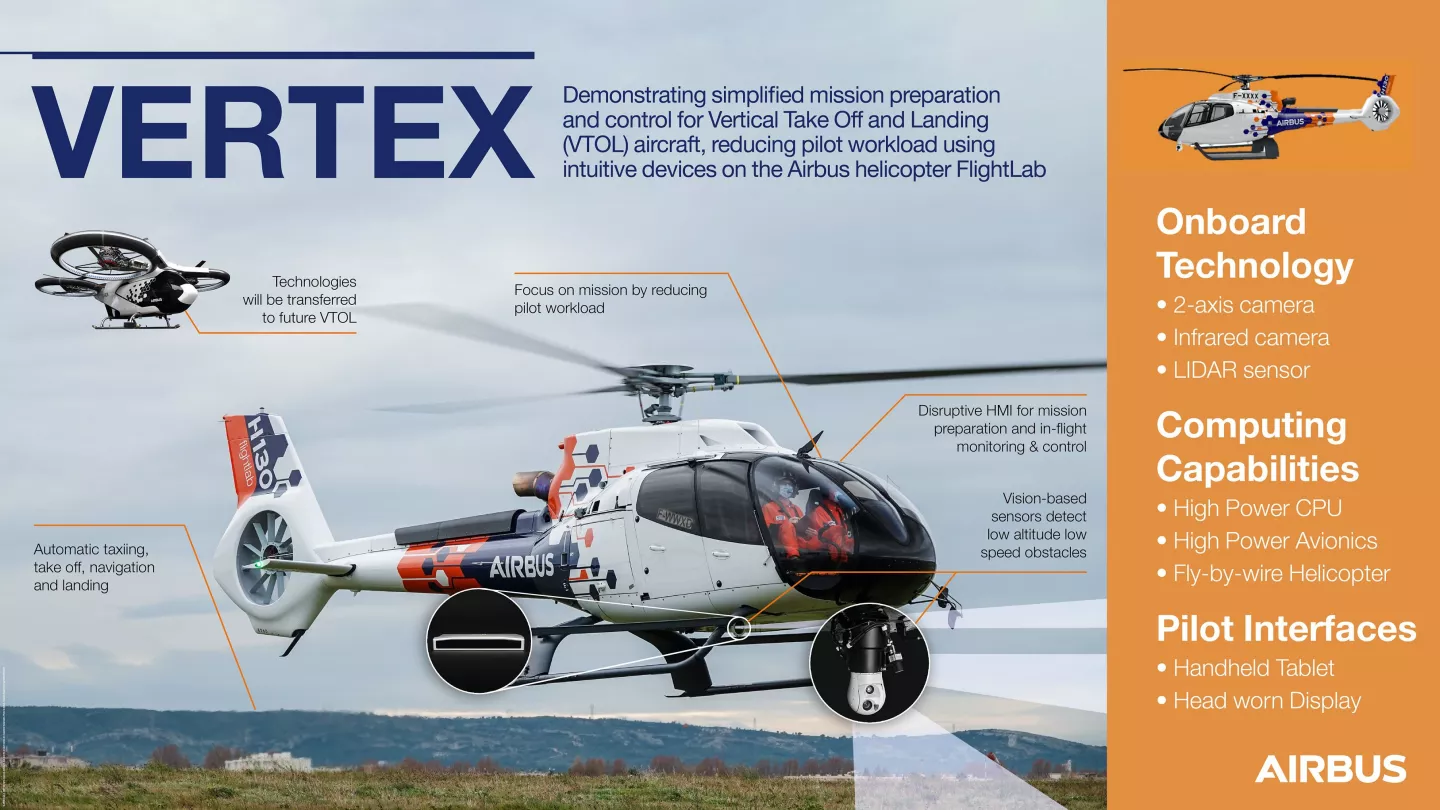Airbus is expanding the capabilities of its Flightlab helicopter designed to test out next-generation aviation technologies, by incorporating some advanced hardware geared toward autonomous flight. This will equip the demonstrator with the ability to take off and land on its own, along with few other new skills hoped to improve flight safety and reduce the workload of human pilots.
Flown for the first time back in January, Airbus' Flightlab helicopter is a platform-agnostic flying laboratory based on its H130 chopper that will offer a testbed for technologies aimed at improving flight safety and operability. These include computer vision systems to identify obstacles, rotor collision alert systems and advanced backup propulsion systems.
Through a new project code-named Vertex, the company is bringing a number of autonomous features into the fold, enabling the aircraft to take off and land, and follow a predetermined flight path. This includes a fly-by-wire system to improve autopilot functionality, a redesigned interface with touchscreen and head-worn display for inflight monitoring, and LiDAR sensing from newly announced partner Luminar.

The addition of LiDAR to help the aircraft sense obstacles around it is a notable one. The technology relies on laser pulses that are sent out millions of times per second to build a 3D map of an environment, based on the light that is reflected back. While effective, the high costs of this sensing technology have limited its adoption in self-driving cars, though we are seeing some move more eggs into that basket, such as Volvo, whose autonomous cars will incorporate Luminar's LiDAR from 2022.
“We are excited by the potential that the Vertex demonstrator project has to offer,” says Grazia Vittadini, Chief Technology Officer, Airbus. “By using our platform-agnostic flying laboratory to mature these technologies, we have an agile and efficient test bed that will support the development of future autonomous systems that could later equip Airbus’ current helicopter range and (e)VTOL platforms.”
Airbus says it has already begun incrementally integrating these technologies into the Vertex demonstrator, and hopes to show them off in 2023.
Source: Airbus





